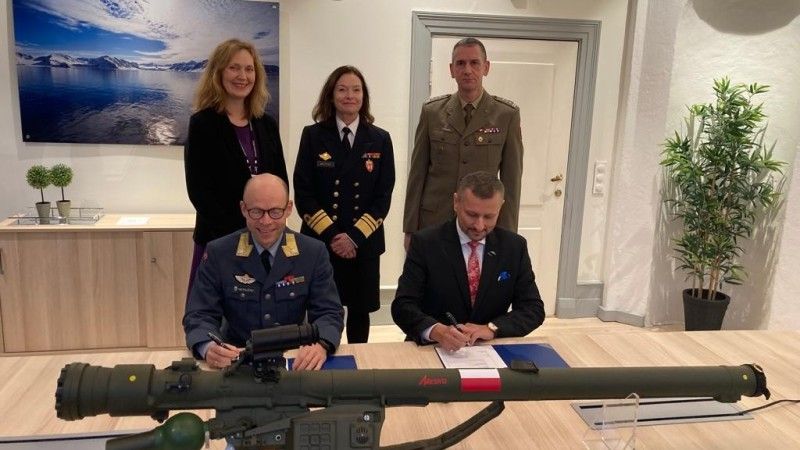Piorun MANPADS Procured for the Norwegian Army

The Norwegian military would receive the Mesko S.A. Piorun MANPADS. Przemysław Kowalczuk, President of the Management Board at Mesko stated that “the agreement is a result of an open procurement process where we have been competing against European and American suppliers of weapons of this class”.
According to the press release issued by Mesko, the agreement was concluded on Tuesday, 29th November, in Oslo. The agreement concerns several hundred missiles and the launch systems. Mesko was represented by Przemysław Kowalczuk, a member of the board.
Norway has become the third state to decide to procure the Polish Piorun MANPADS. Before that, the system had been procured by the US (the first agreement had been signed before the war in Ukraine broke out), and Estonia (with the agreement signed in September this year). Tallinn procured 100 launch systems, and 300 missiles, back in September.
The agreement is a result of an open procurement process where we have been competing against European and American suppliers of weapons of this class. The work performed by the PGZ Group throughout the last year has made our offer much better than the one devised by our competitors, and thus we have won the tender.
@ Przemysław Kowalczuk, Board Member, MESKO S.A.
Przemysław Kowalczuk adds that Mesko S.A. has a huge business potential at its disposal when it comes to transactions of similar profile expected in the future. The agreement signed with Norway is not the last to be expected. Mesko S.A. has been engaged in a broad, long-term collaboration with NAMMO for years now when it comes to medium-calibre munitions. However, the agreement discussed here is the first one ever, that envisages delivery of armament as such for the Norwegian military.
This is not our final word of course. It is just a stop, along the way to expansion to external markets. This is what forms the foundation of our strategy for this product group. Briefly, we have been able to tailor our offer to the specific requirements of the Norwegian customer, which proves our business, and technological flexibility, Kowalczuk notes.
Norway, so far, had no similar equipment at hand, neither in the army air defence inventory (since the RBS 70 missiles were decommissioned, at the beginning of the 21st Century) nor in the territorial defence units, even though a requirement as such has been present since at least a couple of years now. The Navy had had its Mistral 2 missiles before, but these were decommissioned, and recently handed off to Ukraine.
Oslo is recovering its GBAD VSHORAD/SHORAD systems capability in the Army, basing it on the NASAMS (IRIS-T SL, NASAMS) solutions. The Air Force, meanwhile, operates a perfected NASAMS system that soon may be complemented with another solution, of a greater range. According to a Norwegian NDMA Agency agency press release, Piorun systems will be operated by the Army, with first deliveries in 2023. "We received very good offers from several suppliers but decided that Piorun offers the best combination of in terms of time, performance and cost. It can be delivered relatively quickly, it meets the requirements for function and performance, and it also delivers well in terms of cost," says Brigadier General Jarle Nergård, Chief of Air Systems at the NDMA. $$
Piorun MANPADS has been designed for neutralizing helicopters, fixed-wing assets, UAVs, and cruise missiles. The missile features a proximity fuse that makes it possible to hit the target in the event of a near miss.
Extra daytime sight, as well as a thermal imaging sight, have also been used - allowing the operator to remain lethal at night. The system features a new launch system that offers mode selection (pursuit/head-on engagement), target type selection, weather conditions selection, and also the IFF capacity. The launch system works in conjunction with the optical and thermal imaging sights. It also features the capacity to use a launch authorization key.
Piorun can be used against air threats at a distance ranging from 400 meters, up to 6.5 kilometres, flying at altitudes ranging from 10 meters to 4 kilometres. It offers high resilience to passive and active jamming The experiences gathered in Ukraine do confirm the combat capabilities of this system - there, systems as such were used to act against Su-25 or Su-34 fixed-wing assets, Mi-24/35/Ka-52 helicopters, and Orlan-10 UAVs - the latter platform is a challenging target that also poses a major threat, as it acts as means to coordinate the Russian artillery fires.



